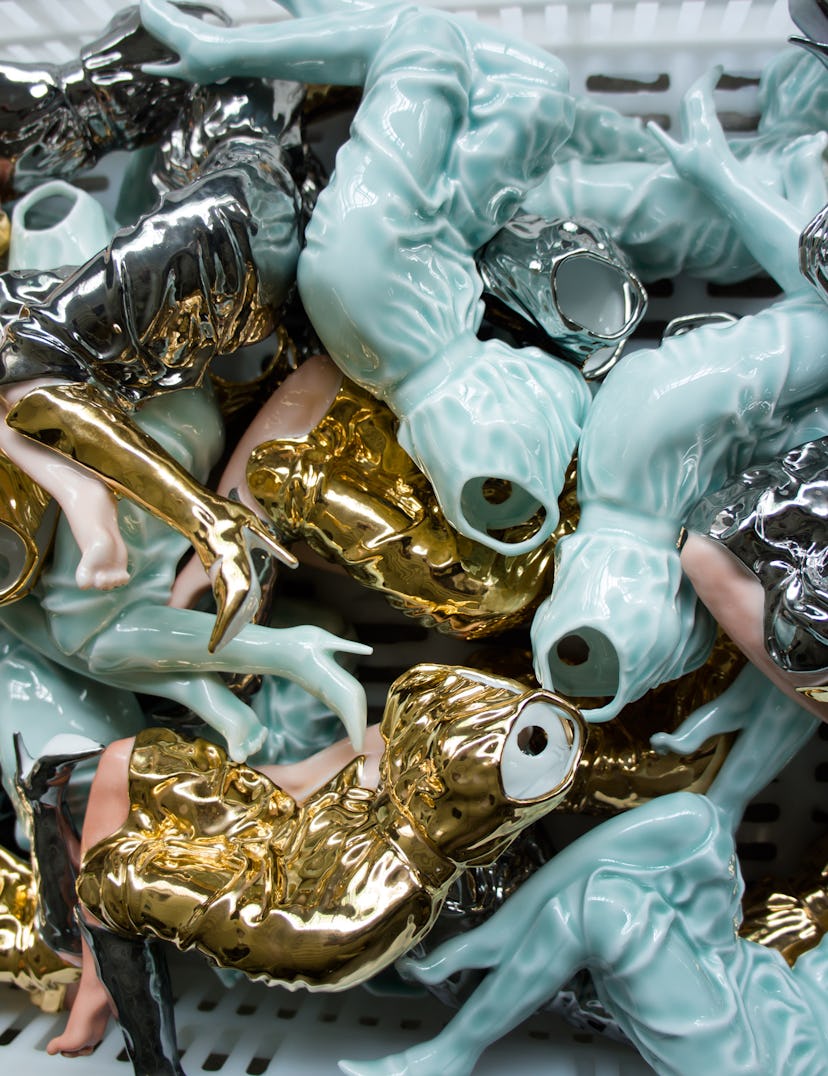Creative License

W gave three Chinese artists complete freedom to express their views on fashion and beauty. But the resulting works are ultimately about contemporary China.
1
Liu Jianhua
Using porcelain, a very traditional medium, Liu Jianhua addresses very contemporary phenomena—namely, China’s unbridled urbanization and its role as the “factory floor” of the world. Liu, who is based in Shanghai, has become well known for his scantily clad headless porcelain figures, which he often serves up on decorative plates. “Ceramics have a profound cultural connotation,” he says. “The fulfilling of material desires can never match our human spiritual world.”
2
Wang Qingsong
For the Beijing photographer and video artist Wang Qingsong, the most difficult part of creating this piece was the casting. “Over the past decades, China has undergone dramatic economic reform, which focuses on the increase of the gross domestic product,” he explains. “People seem to taste the joy of having a rich life, but traditional Chinese culture is evaporating.” So while Frappuccinos, reality television, and designer handbags are becoming increasingly accessible, “unique skills like acrobatics,” Wang says, are becoming increasingly scarce. Wang, who is something of a Chinese Gregory Crewdson, creates meticulously staged, irony-laden tableaux that explore this latest chapter in the cultural revolution. Safe Milk, 2009, a comment on the melamine-tainted infant-formula crisis, features 10 buxom, and apparently lactating, Western models dressed in expensive shoes and jewelry—and not much else, seated at a long table in Last Supper formation. For Competition, 2004, he plastered a 46-foot-by-131-foot wall with ad slogans for everything from condoms to airplanes, which he had written out in traditional Chinese ink-brush style. And for Happy Bodybuilders, 2013 (pictured), he found a 10-person weight-training machine and invited 12 contortionists to perform. “It took me a long time to find them, simply because there are not many people in this profession,” laments the artist, adding that he has been thinking of making a film about ancient Chinese acrobatics but has been unable to find any masters of the art. “We are so good at learning from the West,” he says. “But we fail to inherit the good from our past.”
3
Hong Hao
The Beijing artist’s dense compositions of scanned images of all manner of objects including maps, books, tickets, food, containers (and, in this case, beauty products) can take on the mesmerizing intricacy of Gustav Klimt paintings. “It is not critical,” he says of his work. “It is very narrative, just like keeping a diary.” And though this glut of cosmetics reflects a desire to appear more beautiful to others, the scanner remains totally objective. “It does not judge or comment. It just scans and shows the result to you, regardless of your will.”